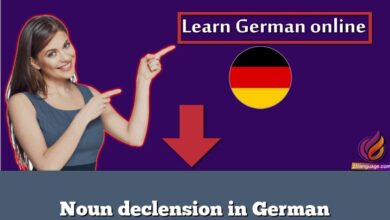The proper way for Forming Questions in German

Forming Questions in German
In this lesson , you will learn the proper way for Forming Questions in German . The common word order in a German sentence is the same as in English : Subject verb Objects (SvO) .
| Der Junge spielt Fußball | The boy plays soccer. |
This sentence is in the indicative mood , the mood that states a fact . The interrogative mood asks a question . To change the English sentence “The boy throws the ball” to the interrogative mood , we insert the helper verb “does” before “boy” , ending with”?” . “Does the boy throw the ball?”
The process is very similar in German . However , since German verbs express both the simple and progressive aspects , we switch the whole verb with the subject :
| “Spielt der Junge Fußball?” | Does the boy play soccer |
For now in Forming Questions in German , you have learned two questions so far : “Wie heißt…?” and “Wie geht’s?” . In German, there are two basic ways to form a question . The first is the method described above . In addition to this , you can put an interrogative adverb…

The question “Wie heißt…?” , directly translated , means “How is … called?” . That is why it does not contain Was . These words come first in the sentence ; the word order is : Interr (Adverb Verb Subject Object) . For example :
| Warum spielt der Junge Fußball? | Why does the boy play soccer? |
Now , You should note at this point that in German , the verb always comes second in the sentence , except
in the case of a question as described above . The subject is always next to the verb , if not in front of
it then following it . For example :
| Der Junge spielte am Montag Fußball . | The boy played soccer on Monday . |
| Am Montag spielte der Junge Fußball . | On Monday, the boy played soccer . |
At this point , you should know the words for yes→ ja and no→ nein respectively .



























